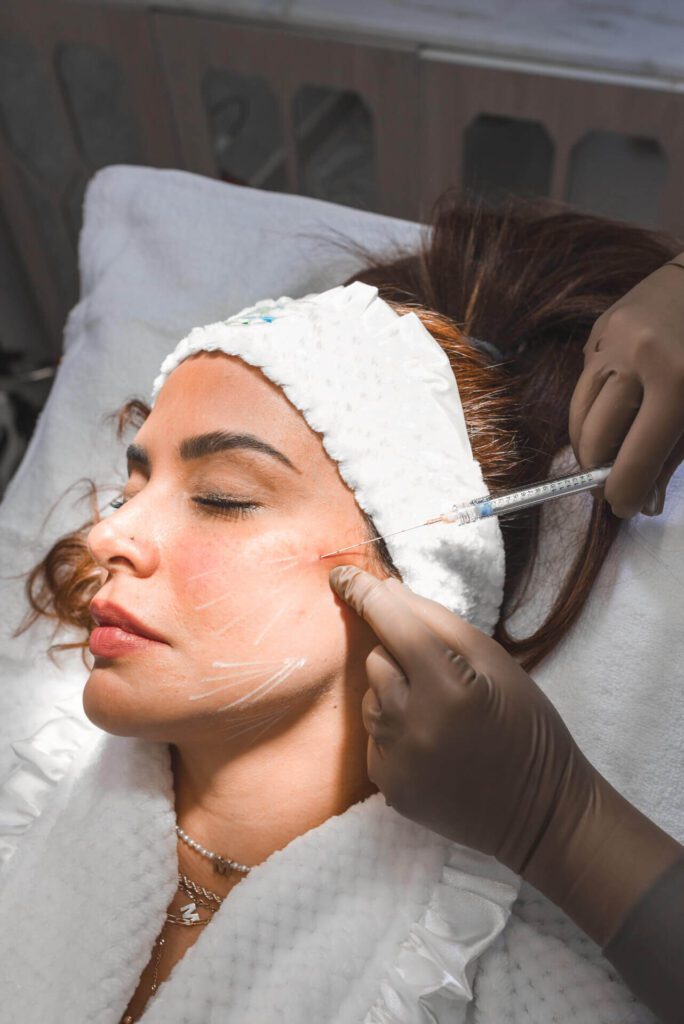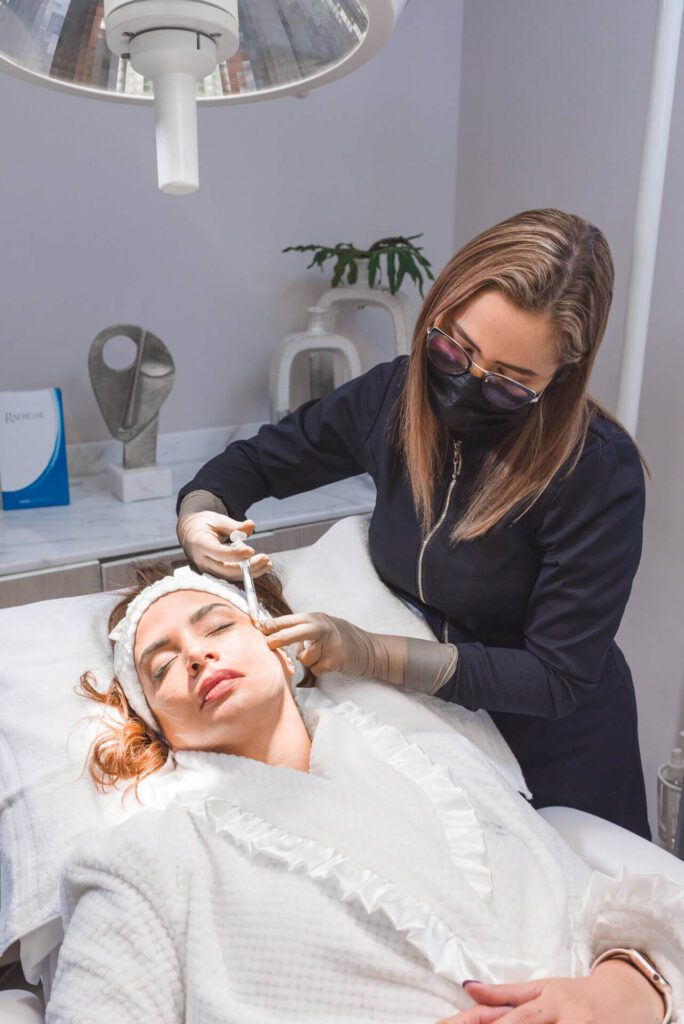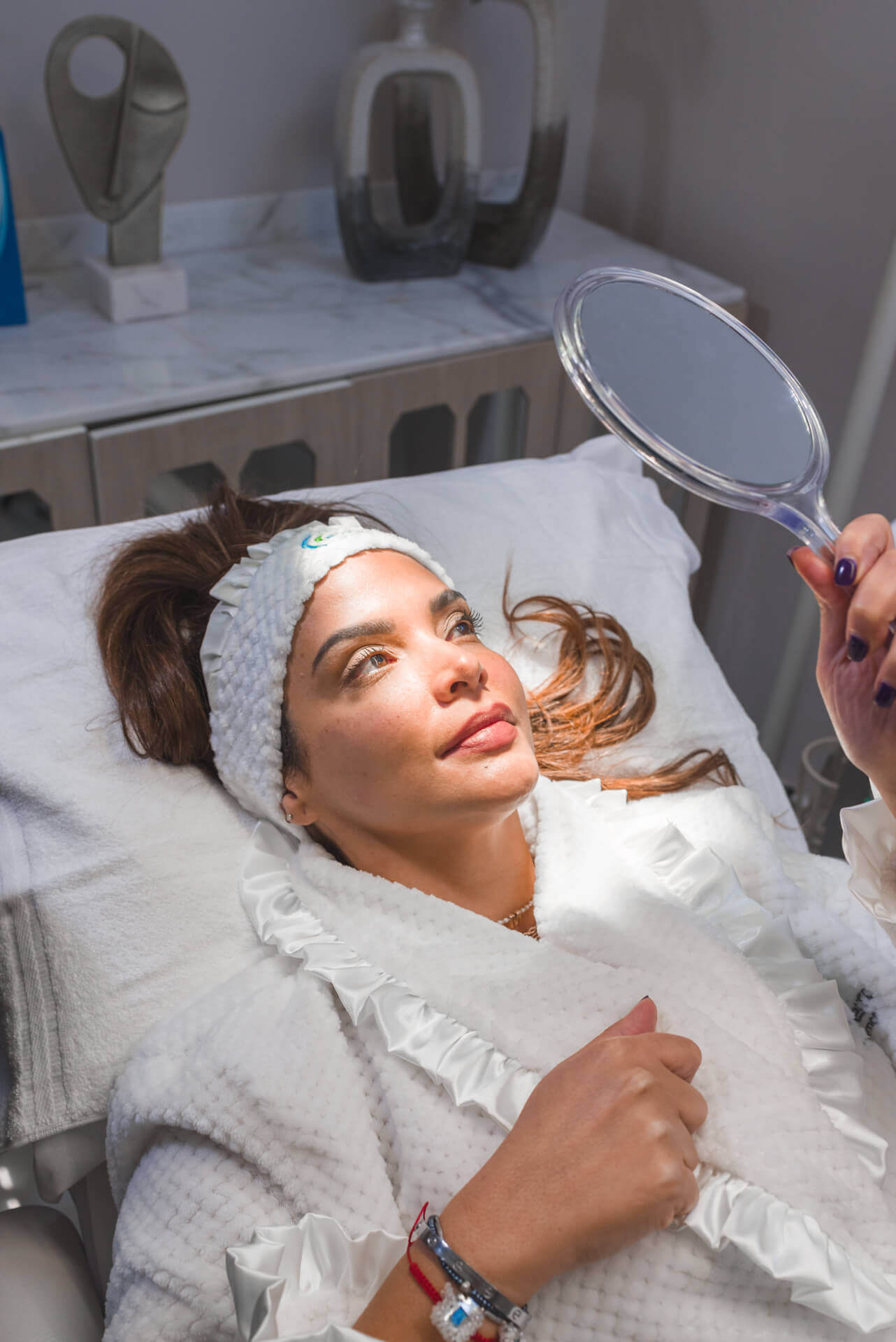Some of the most popular treatments today, and which have meant a great evolution in facial and body aesthetics, are the so-called biostimulants.
And there are increasingly more options available to us to improve our appearance and feel more secure and confident in ourselves.
Therefore, in this article, we will explain the main characteristics of the most popular biostimulators, including Harmonyca, Radiesse and Sculptra.
What is a biostimulator?
First, it is important to understand what a biostimulator is and how it works.
A biostimulator is a product injected into the skin to stimulate the natural production of collagen, elastin, and hyaluronic acid, which are the substances that give our skin firmness, elasticity, and volume.
Over time, the production of these substances decreases, causing wrinkles, sagging, and loss of volume in the face and body.

When to use biostimulants?
After age 30, collagen production decreases, so this would be the age to begin treatment with biostimulants.
However, in patients with special situations, such as bariatric surgery, intense exercise, dieting, or other excessive weight loss, it is necessary to treat facial sagging or certain body areas before the estimated age.
In what areas can they be used?
Collagen biostimulators have specific indications depending on the area we wish to treat. In the case of Sculptra, Radiesse, and PDO Threads, we use them to treat the face, hands, neck, neckline, arms (bat wings), and buttocks.
In the case of Harmonyca, we use it exclusively on the facial area.

Radiesse vs. Harmonyca
Let's talk a little about the difference between Radiesse and Harmonyca.
Both share calcium hydroxyapatite as an active ingredient.
In the case of Radiesse, it provides a skin redensifying effect, improving expression lines and the overall appearance of the skin.
As for Harmonyca, it is considered a next-generation biostimulator.
This is because it is a hybrid biostimulant that contains, in addition to calcium hydroxyapatite, hyaluronic acid.
One of Harmonyca's special features is its high cohesion or adhesion to the tissue where it is applied.
This allows for an immediate effect of defining the facial contour, without neglecting the delayed effect of collagen biostimulation.
In conclusion, the key to a successful biostimulation outcome depends on the choice of treatment, which is determined by the patient's needs to achieve the desired result.
Do you have questions about biostimulants? Click here to contact us.

